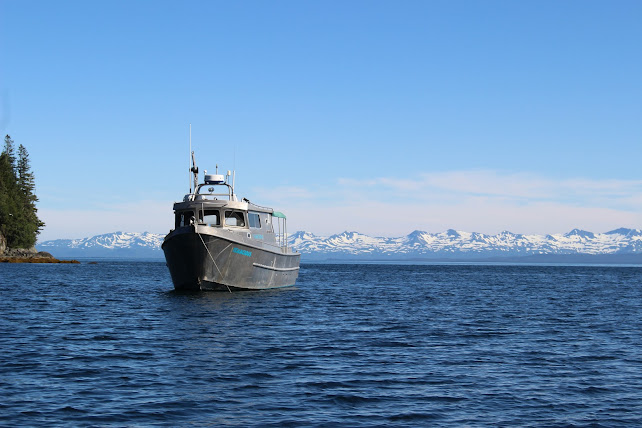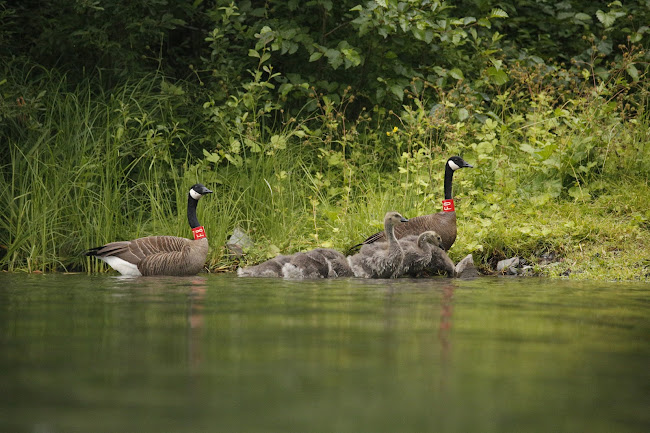Monitoring Islands Using Game Cameras
Beginning in mid-late April and early May, when the snow melts and Duskies arrive and start to scout nest sites, the Dusky Crew begins to put out cameras on nest islands to monitor depredation and other important nest success and use factors. Some evidence of nest predation was already present on a few nests (May 4th), while others had full clutches of eggs already being incubated (pictured above). Cameras are set up somewhat off the island, giving room to capture any interaction on or near the island. When we visit an island to install a camera, we record data on data sheets specific for the islands and project. These data sheets include things like location, number of eggs, if goose present has a red neck collar, visit fate, etc. Next time that island is visited, the previous record will be compared to examination of the island on that day.
To get to these remote islands from the Alaganik Slough boat launch, the crew uses an air boat and poke boats (kayak) in the smaller ponds if not easily accessed by foot. In boats, we transport island cameras and camera equipment (batteries and SD cards), data sheets, cameras for documentation of the project, and other important nest monitoring tools like candlers. Candlers are dark cylinders that help us determine the stage of the egg and the order in which they were laid. From that, we can number the eggs and use them for future reference on later visits if needed.
Monitoring in the early stages will help us when we start maintenance on the islands later in the summer. Duskies have particular preferences in habitat type when selecting an artificial nest (vegetation height, density of vegetation, distance from shore, etc). While we are working with the artificial nests and setting up cameras, we also walk vegetation along pond edges searching for natural nest sites. Finding natural sites helps us compare fates of the two types of nests. As Duskies begin their prime nesting times, we try and disturb them as little as possible, but the use of island cameras help us keep an eye on them without disruption. Though it takes patience because we can't know results until we retrieve the cameras, it is important for improving the project down the road.
If anyone has questions, feel free to contact me at blakep.richard0@gmail.com, I'm happy to answer them the best I can or find additional information and resources. This week I'll be out camping in the remote Controller Bay at the mouth of the Bering River surveying Red Knots with the Alaska Department of Fish and Game.
Before leaving the airboat, we develop a plan of which islands to visit and cameras to put out.















Comments
Post a Comment